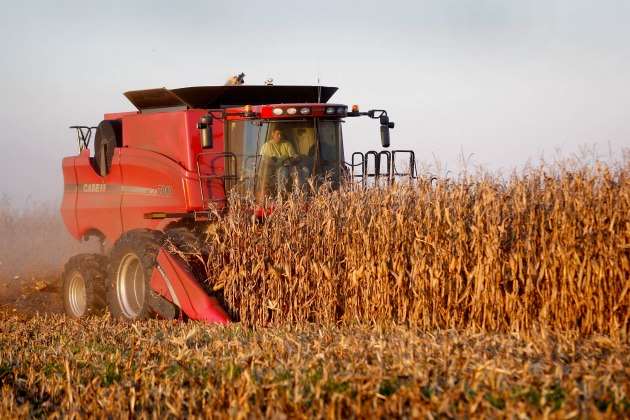
On Tuesday morning, USDA released its April 2017 World Agricultural Supply and Demand Estimates (WASDE) report. Here are some key highlights from this report.
Corn. USDA estimates unchanged ending stocks, with an increase in corn to produce ethanol offsetting reduced feed and residual use. Ethanol production was above expectations in March, but there was a 50 million bushel reduction in projected feed and residual use. USDA says season-average corn price received by producers is unchanged at the midpoint, but with a narrower range of $3.25 to $3.55 per bu.
Soybean. Highlights include higher seed use, reduced residual disappearance and higher ending stocks. Exports and crush estimates are unchanged, leaving soybean ending stocks projected at 445 million bushels, 10 million higher than last month. Season-average price has been lowered 5 cents at the midpoint to $9.55 per bu.
Wheat. U.S. wheat ending stocks for 2016/17 have been raised 30 million bushels based on lower feed and residual use. This more than offset a slight reduction of imports. Ending stocks are projected to reach a near 30-year high, at 1,159 million bushels. Global supply estimates are raised by 1.7 million tons, and total global consumption is lowered 0.6 million tons to 740.8 million.
Cotton. Exports are estimated 800,000 bales higher to 14.0 million total. That’s the fourth-largest volume ever for U.S. exports and accounts for nearly 40% of total world trade. Marketing year price received by producers is projected to average 67 cents to 69 cents per pound.
Livestock. The 2017 forecast of total red meat and poultry production is raised from last month as higher beef and turkey production more than offset modest reductions in pork production. Beef production is forecast higher on the current pace of slaughter and heavier-than-expected cattle weights in the first half of the year. The pork production forecast is lowered slightly with second and third-quarter production reduced but almost offset by higher fourth-quarter production. The March Quarterly Hogs and Pigs report indicated that industry expansion is still underway although producers intend to slow farrowings this summer.